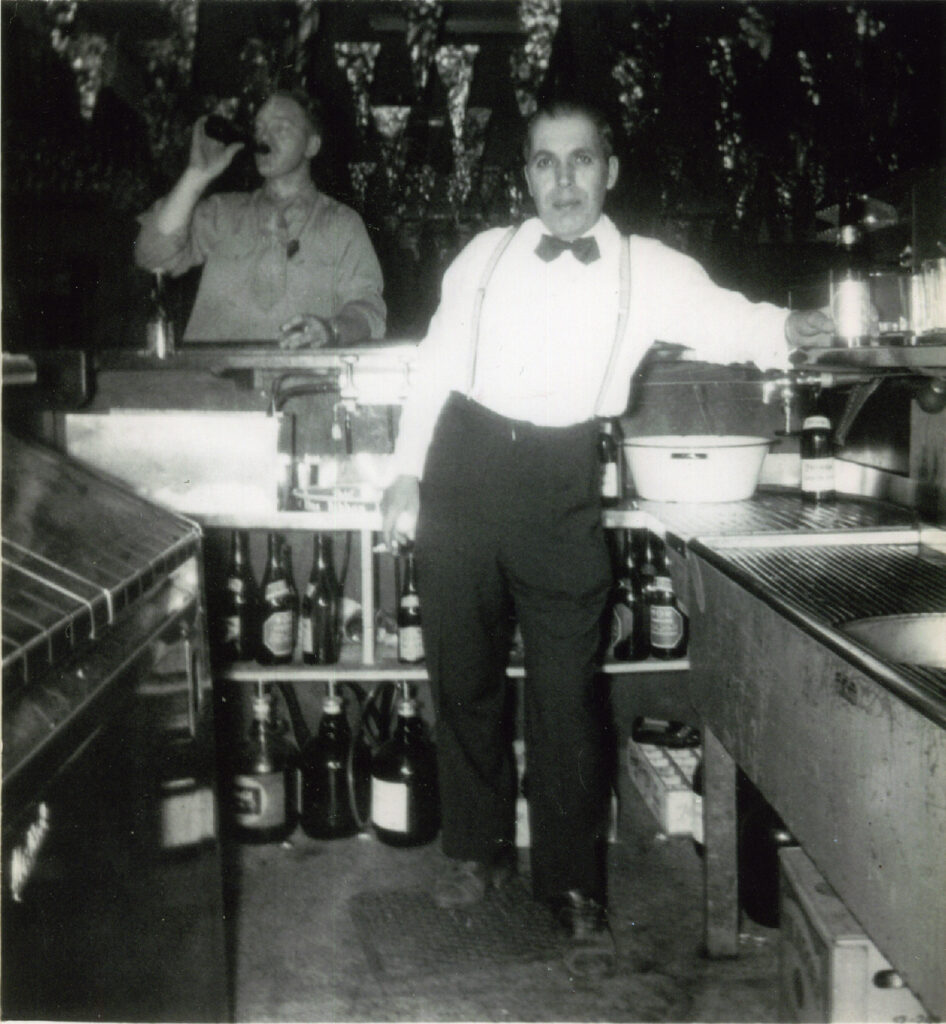
Tony Bava behind the bar at Venice Gardens
clay county histories
Markus Krueger | Program Director HCSCC
In 1909, the Northern Pacific Railway moved their division headquarters from Fargo to a railroad siding that arose to become Clay County’s second largest city: Dilworth. The NP recruited workers from Italian communities in Minneapolis and Wisconsin. By the next year, Dilworth was home to 70 Italian American workers, wives and kids. Most of these families lived in a neighborhood by the yard that people called Little Italy. Dilworth’s Little Italy families are well known around here – the Varrianos, Oliveris, Pardinos, Costellos, Verdis, Altobellis. . . One of those Italian immigrant railroad workers was a boilermaker named Dominico Bava.
Working on the railroad a century ago was a very dangerous job. Dominico’s grandson Al Gordon recalled that in the late 1920s the boilermaker was seriously injured and spent a year recovering in a St. Paul hospital. Dominico returned home, but not to the railroad. About 1928, he and his wife Chiara opened a restaurant in Little Italy they called Venice Gardens.
Chiara did the cooking – a few variations on spaghetti for a quarter a plate. Their son Tony Bava quit his job as a clerk for the NP to help run the restaurant. Tony was the public face of the place due to his parents’ limited English skills and because he was good at it, but he did not officially own Venice Gardens until the death of his father in 1962. The restaurant was on the ground floor and the Bavas lived upstairs.
I’ve long been fascinated by our area’s Prohibition history. If you want that Jazz Joint Speakeasy experience, Dilworth was the place to go, outshining Moorhead and Fargo. I know from jail registries that in 1928 there were 14 places selling alcohol on just three blocks of downtown Moorhead, but most of those places were soda shops spiking drinks, cigar stores selling flasks, or booze-peddling barbershops. On March 12, 1933, the Fargo Forum reported that Deputy Sheriff John Whaley kicked out 95 people when he raided three Dilworth nightclubs – Venice Gardens, Spanish Villa, and Leo Oliveri’s restaurant. “Members of both sexes, many of them extremely youthful, were lurching about drunkenly, talking in loud voices, and otherwise acting in a disgraceful manner when he entered,” reported the paper, “orchestras were playing and the merriment was at high pitch.”
In the mid-1940s, the Bava family moved Venice Gardens – the whole building – from Little Italy to Highway 10, a little east of where the Carpet Garage is today. They doubled the building in size, and the bands played on. Peggy Lee and Victor Lombardo played there.
In the 1960s, Venice Gardens evolved from a restaurant into an event venue, a place for private parties and wedding dances. Tony Bava spent most of his time at his new businesses, Kool Kone and Highway 10 Liquors. Locals my age know the building as the original Altony’s Restaurant, founded by Al Gordon and named in part for his Uncle Tony Bava. Tony Bava sold Venice Gardens in 1980 and the building became Union Station bar. It burned down some years later.

